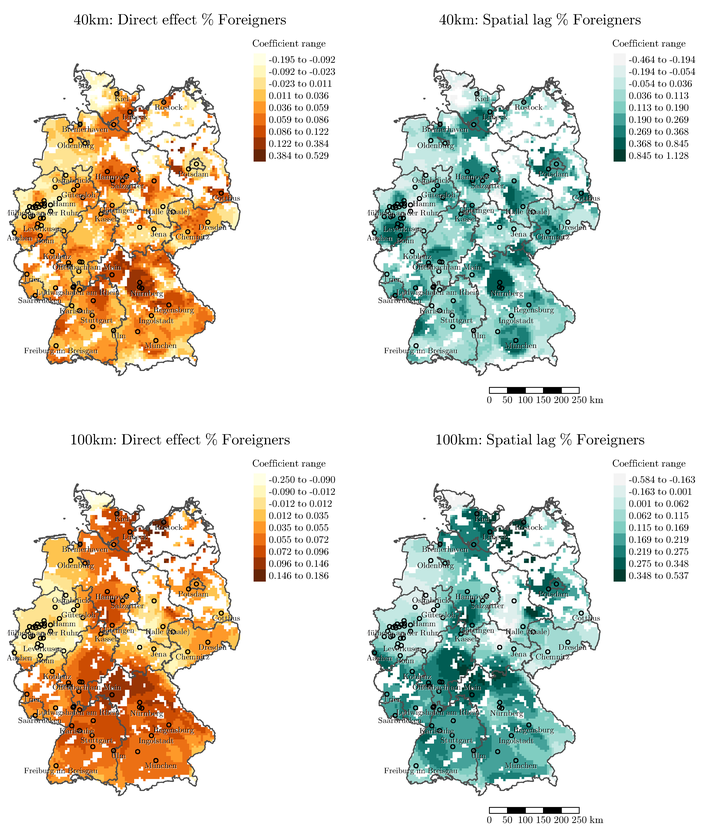Consistent Inequality across Germany? Exploring Spatial Heterogeneity in the Unequal Distribution of Air Pollution

Abstract
The topic of environmental inequality, in general describing the unequal distribution of environmental pollution across different social groups, has received increasing attention in Germany and other European countries during the past decade. Though research points towards a disadvantage of minorities in Europe, conclusions regarding the extent of this disadvantage vary across studies. In this contribution, we thus examine whether the extent of environmental inequality depends on the measure of pollution and the spatial scale. We connect spatially aggregated data of the 2011 German census to geographical information of industrial facilities and pollution estimates of German-wide diffusion models. We then use spatial regression models to identify the disadvantage of foreign minorities across these measures. Furthermore, we perform geographically weighted regressions to scrutinize the role of the spatial scale and location. We find that the pollution minority gap is stronger for estimates based on industrial facilities than it is for general pollution models, though there is a consistent disadvantage of minorities within municipalities. Furthermore, we demonstrate that there is strong heterogeneity in the association between the share of foreign minorities and air pollution according to the spatial scale and location of the research area.